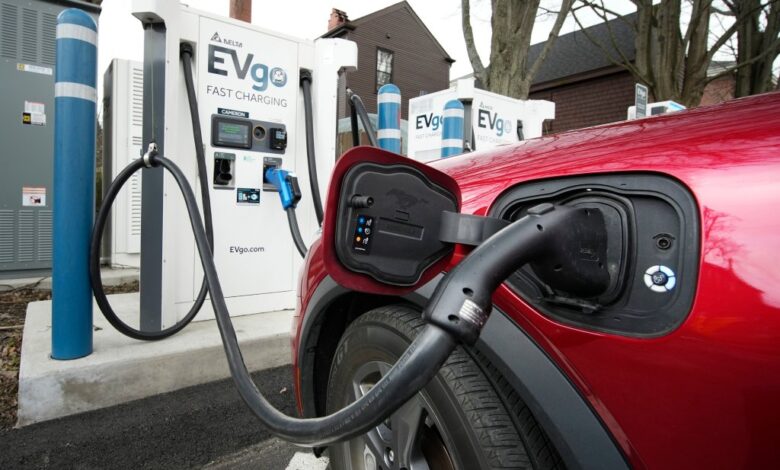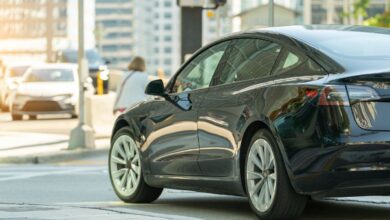Electric vehicles, heat pumps driving up electricity demand in Maine

New England’s grid operator is expecting Maine’s electricity use to soar in the coming decade to power heat pumps and a growing number of electric vehicles, despite the state’s rejection of policies calling for broader EV use.
Maine is expected to maintain its position as a leader in electric heat pump installations. The state is forecast to consume more electricity for heat pumps in 2033 than any other New England state except Massachusetts, according to ISO-New England’s 2024-2033 Forecast Report of Capacity, Energy, Loads and Transmission.
As a result, the increase in Maine’s use of electricity in the coming decade is expected to outpace the six-state region.
Overall, electricity consumption is expected to rise by 30% in the next decade in Maine, with most of the increase driven by more heat pumps. For New England, electricity use is forecast to rise by 17%.
But EV use is also expected to grow significantly.
EVs in Maine will require 63 times more power one decade from now, with demand rising to 1,845 gigawatt hours (GWh) annually in 2033 from 29 GWh this year, according to ISO. The state’s shift to electric vehicles would be the second strongest in New England, after New Hampshire.
A gigawatt hour is the amount of electricity generated in one hour by a power plant large enough to support more than 800,000 homes.
The pace of expected EV growth in Maine reflects in part how far Maine lags other New England states in the use of electricity to power vehicles.
Connecticut and Massachusetts, the region’s most urban states, account for 77.5% of the region’s electricity use for transportation. The two states’ share is expected to drop slightly over the decade as the region’s more rural states catch up.
Evolving state policies create uncertainty in forecasting, said Victoria Rojo, lead data scientist at ISO.
“This is the challenge of being a forecaster. We’re doing the best we can with the data we have on hand,” she said. “The data landscape is constantly changing.”
For example, collecting information on electric heating is difficult because reporting on equipment installations is not consistent among the six states, Rojo said. And although efficiency programs are a reliable source for data about the growth in electric heat pump use, many homeowners don’t require subsidies, she said.
The grid operator consults regulators, state environmental officials and others as it designs its data models, she said.
State and federal subsidies have helped make Maine a leader in installation of electric heat pumps.
Electric use for heating in Maine is forecast to increase to 1,469 GWh annually in 2033 from 142 GWh this year, a 10-fold increase, outpacing all other New England states except Massachusetts, which is forecast to consume 3,794 GWh in 2033 for electric heating.
As state and federal policies continue to bear down on greenhouse gas emissions and lean into electrification, the six-state region is expected to increase electric use for transportation to more than 15,000 GWh in 2033, compared with 325 GWh this year.
Andrew Price, president and chief executive officer of Competitive Energy Services, a Portland consulting firm, said the adoption of EVs “could be a bit faster or slower than this forecast, but it will happen for performance as well as environmental reasons, regardless of politics.”
EVs will be less expensive to own and operate and perform better, he said. Price compared advances in the vehicles to broader use of heat pumps over oil heat, a traditional source of home heating in Maine.
With as much as half of greenhouse gas emissions from gasoline and diesel-fueled vehicles, environmentalists trying to slow climate change have urged EV expansion in Maine.
“We can do heating. We can do renewables,” Jack Shapiro, climate and clean energy director at the Natural Resources Council of Maine, said at a forum last week organized by ClimateWork Maine. “But if we don’t address transportation then we’re leaving a huge amount of work undone.”
The state Board of Environmental Protection in March rejected a proposed expansion of electric and hybrid vehicles in Maine. Environmentalists pushed for new EV standards to curb tailpipe emissions, but car dealers and legislative Republicans opposed the move, calling it government overreach.
The state standards would have required increasing the share of electric and hybrid cars and trucks sold in Maine to 51% of all vehicles sold in 2028 and 82% of all vehicles sold in 2032.
The Legislature and Gov. Janet Mills enacted a law last month giving lawmakers final authority to decide on such rules in the future.
The ISO report avoids the complicated issue of whether the region’s grid can handle the push to electrify heating and transportation. “My role is to figure out what is coming and characterize it as accurately as possible,” Rojo said.
State law requires Central Maine Power and Versant Power to submit to the Public Utilities Commission plans detailing the expected effect of climate change on their equipment. The PUC is considering numerous comments from environmentalists, ratepayers and others.
Price said electricity consumption growth projections are up significantly nationwide, due not only to more heat pumps and EVs, but also in response to increasing demand for data centers and the rise of some manufacturing sectors. The projected net growth in electricity consumption in New England, 1.8% annually over 10 years, is “at the low end” of forecasts for other regions with greater demand for data centers that process information used by advanced manufacturing, cloud computing and artificial intelligence, he said.
Developers of data centers seek large metropolitan areas such as Atlanta, Los Angeles and New York and high-tech centers in Seattle, Northern Virginia and Silicon Valley, Calif.
Rojo said the overall growth in electricity forecast by ISO is “appropriate for what we have going on in New England,” reflecting that manufacturing and data centers are not high-growth sectors.
Greater electricity use in New England will change the seasonal trends of energy use.
Peak demand, a measure of the greatest use of electricity in an hour, will shift to winter from summer over the coming decade, ISO said. Due to near-universal air conditioner use, the annual peak in the region is traditionally during summer. But as electrification replaces oil and natural gas, ISO expects the winter peak to nearly match the summer peak.
That shift could ease pressure on demands to build out transmission to keep up with greater electrification, Price said. Transmission lines typically heat up and sag and carry less load in the summer than during the winter when lines have more capacity, he said.
Related Stories



